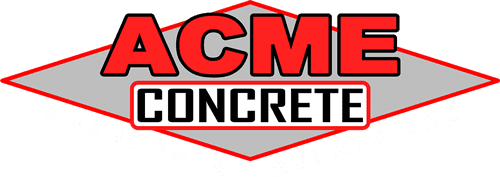The Basics of Concrete Raising and Lifting
Concrete raising, also known as concrete lifting or slabjacking, is a repair process that restores sunken or uneven slabs by injecting a stabilizing material beneath the surface. Instead of tearing out and replacing the slab, this method reuses the existing concrete, reducing cost, time, and waste.
Homeowners in Crystal Lake often wonder how long it takes to raise concrete compared to pouring a new slab. The short answer is that raising concrete typically takes only a few hours, while replacement can take days or even weeks. To understand why, it’s helpful to look at the process, the materials used, and the conditions that influence timing.
How Long Does It Take on Average?
Most concrete raising projects can be completed in 1 to 4 hours, depending on the size and complexity of the job. In many cases, the repaired surface is ready for light use within 15 minutes to 24 hours. This speed is one of the major advantages over replacement, which requires demolition, new concrete pouring, and a full curing period that may last nearly a month.
Factors That Affect the Timeline
Several variables influence how long a project will take from start to finish.
Size of the Slab
Smaller areas, such as a single sidewalk square or one corner of a driveway, can often be raised in under an hour. Larger projects, such as garage floors or patios, require more time to drill, inject, and finish.
Material Choice
- Mudjacking Slurry: Uses a cement, sand, and soil mix. It requires more injection time and longer curing.
- Polyurethane Foam: Expands quickly and cures in minutes, often allowing use the same day.
Accessibility
Slabs that are easy to reach with equipment can be raised faster. Indoor slabs or those surrounded by landscaping may take longer to complete.
Condition of the Slab
If the slab is cracked, tilted in multiple directions, or has deep settlement, the project requires more injection material and precision leveling, extending the timeline.
Weather Conditions
While raising concrete is less weather-sensitive than pouring new slabs, heavy rain or extreme temperatures can slow down the process.
Step-by-Step Breakdown of the Process
A typical project involves several phases. Each step contributes to the total time required.
Site Preparation
The crew inspects and marks the slab, clears debris, and plans drill hole placement. This usually takes 15 to 30 minutes, depending on the project size.
Drilling
Holes about the size of a quarter (polyurethane) or larger (mudjacking) are drilled into the slab at specific points. This may take another 15 to 30 minutes.
Injection
The leveling compound is carefully injected beneath the slab, filling voids and raising the concrete back to grade. This step can take anywhere from 30 minutes to over an hour, depending on how much lift is needed.
Sealing
After the slab is leveled, the holes are sealed with cement or filler to restore the appearance. This step typically takes 15 to 20 minutes.
Curing
Polyurethane cures almost instantly, while mudjacking slurry requires several hours before the slab can support weight.
Comparing Raising vs. Replacement
Here’s a simple chart to show how raising concrete compares to replacement in terms of time:
| Method | Time to Complete | Ready for Use | Downtime |
| Concrete Raising (Polyurethane) | 1–3 hours | 15–30 minutes | Very Low |
| Concrete Raising (Mudjacking) | 2–4 hours | 4–24 hours | Low |
| Concrete Replacement | 2–3 days + 28 days curing | Up to 1 month | Very High |
Benefits of a Faster Process
Concrete lifting offers several advantages that go beyond speed.
Reduced Disruption
Driveways, sidewalks, and patios can be used almost immediately after the work is complete.
Lower Cost
The process requires less labor and material, making it significantly cheaper than replacement.
Eco-Friendly
Since the original slab is kept in place, less waste is produced and fewer raw materials are needed.
Durability
Polyurethane foam resists moisture and erosion, providing long-lasting stability that can last a decade or more.
When Is Concrete Raising the Right Solution?
Concrete raising is ideal for:
- Driveways with sunken sections near garages or sidewalks
- Patios or porches that have shifted
- Walkways that have become trip hazards
- Garage or basement floors with uneven settlement
If the slab is crumbling, severely cracked, or structurally unsound, replacement may still be necessary.
Tips for Homeowners to Ensure Efficiency
- Prepare the Work Area: Remove vehicles, furniture, or obstacles before the crew arrives.
- Select Polyurethane for Speed: Foam injection cures quickly and provides long-lasting results.
- Choose a Trusted Contractor: Experienced professionals can complete the job faster and with better precision.
- Schedule During Mild Weather: Avoiding rain or freezing temperatures helps ensure efficiency.
How Long Will the Results Last?
While the actual raising process is fast, the results are designed to last. With polyurethane injection, slabs often remain stable for 10 to 15 years or more. The longevity depends on soil stability, drainage conditions, and the quality of the repair.
So, how long does it take to raise concrete? For most projects, just a few hours from start to finish. In Crystal Lake, homeowners can have a sunken driveway, patio, or sidewalk repaired and ready for use the same day, making concrete raising one of the fastest, most effective solutions for uneven slabs.
Trusted Concrete Repair Is Just a Phone Call Away
For homeowners in Crystal Lake, IL, Acme Concrete Raising & Repair Inc. provides reliable, fast, and professional slab lifting services. Located at 824 S Main St Ste. 105, Crystal Lake, IL 60014, the company has built a reputation for precision repairs and excellent customer service. If you are dealing with uneven sidewalks, sinking driveways, or garage floor settlement, you can reach their team at (815) 264-2200 to restore stability to your property quickly and effectively.
